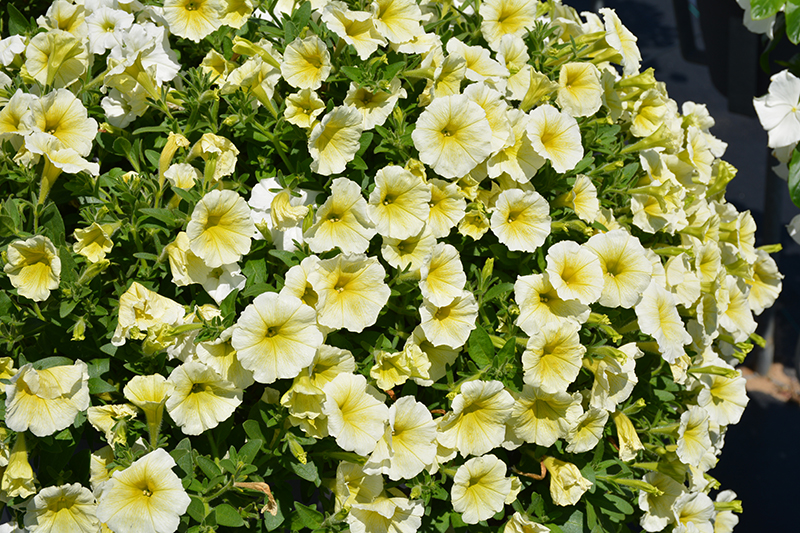Search Our Plants
Easy Wave® Yellow Petunia
Petunia 'Easy Wave Yellow'
Height: 12 inches
Spacing: 24 inches
Sunlight:
![]()
Hardiness Zone: (annual)
Group/Class: Easy Wave Series
Brand: Ball
Description:
This selection will stand out, with fast growing plants that bloom freely all season, in landscapes or containers; tolerates both heat and cooler conditions very well; tends to be more mounded with a controlled spread, and excellent uniformity
Ornamental Features
Easy Wave® Yellow Petunia is smothered in stunning yellow trumpet-shaped flowers with buttery yellow edges at the ends of the stems from mid spring to late summer. Its pointy leaves remain green in color throughout the season.
Landscape Attributes
Easy Wave® Yellow Petunia is a dense herbaceous annual with a trailing habit of growth, eventually spilling over the edges of hanging baskets and containers. Its medium texture blends into the garden, but can always be balanced by a couple of finer or coarser plants for an effective composition.
This plant will require occasional maintenance and upkeep. Trim off the flower heads after they fade and die to encourage more blooms late into the season. It is a good choice for attracting bees and hummingbirds to your yard, but is not particularly attractive to deer who tend to leave it alone in favor of tastier treats. It has no significant negative characteristics.
Easy Wave® Yellow Petunia is recommended for the following landscape applications;
- Mass Planting
- Border Edging
- General Garden Use
- Container Planting
- Hanging Baskets
Planting & Growing
Easy Wave® Yellow Petunia will grow to be about 12 inches tall at maturity, with a spread of 30 inches. When grown in masses or used as a bedding plant, individual plants should be spaced approximately 24 inches apart. Its foliage tends to remain dense right to the ground, not requiring facer plants in front. This fast-growing annual will normally live for one full growing season, needing replacement the following year.
This plant should only be grown in full sunlight. It does best in average to evenly moist conditions, but will not tolerate standing water. It is not particular as to soil type or pH. It is highly tolerant of urban pollution and will even thrive in inner city environments. This particular variety is an interspecific hybrid. It can be propagated by cuttings; however, as a cultivated variety, be aware that it may be subject to certain restrictions or prohibitions on propagation.
Easy Wave® Yellow Petunia is a fine choice for the garden, but it is also a good selection for planting in outdoor containers and hanging baskets. Because of its trailing habit of growth, it is ideally suited for use as a 'spiller' in the 'spiller-thriller-filler' container combination; plant it near the edges where it can spill gracefully over the pot. Note that when growing plants in outdoor containers and baskets, they may require more frequent waterings than they would in the yard or garden.
This Plant Finder tool is an online catalog representing many of the varieties that we carry over the course of the season, and is intended for informational purposes only. Inventory varies seasonally, so we cannot guarantee that every plant will be in stock at all times - please contact your nearest Platt Hill Nursery store for current availability. It does not include our entire inventory of plants, so be sure to visit us to see varieties that may not be represented on this list.


